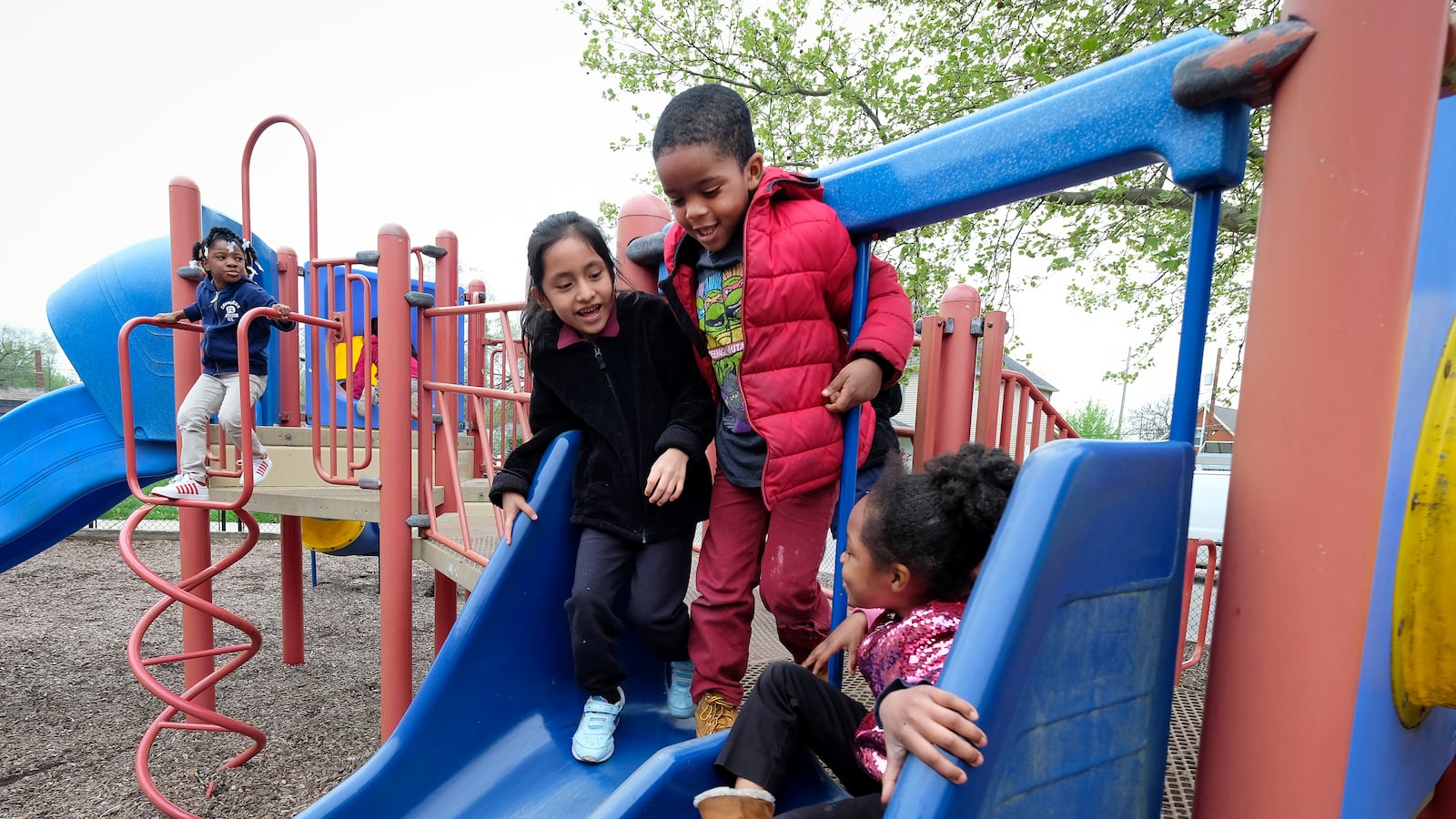At lunch on a recent day, school counselor Tina Page watched as a middle-school student calmly walked other students through a series of questions to resolve a conflict.
What happened?
How did that make you feel?
What can you do now?
To an outsider, it might have looked like a simple lunch conversation. But for Page, this was a huge win. Whether the student noticed it or not, she was modeling a restorative justice practice that administrators hope will significantly shift the culture — and, eventually, academics — at their small, urban Catholic school on the near eastside of Indianapolis.
“I pictured them as adults, away from us, doing this,” Page said. “It gives them more power. They can get through the conflict themselves and resolve it on their own. They need that as much as they need math and science.”
With her team from Holy Cross Central School, Page shared their progress with restorative practices during a day-long retreat last month. The session concluded a five-month training through Peace Learning Center, a local community organization, with about two dozen Central Indiana educators.
Their wins were satisfying: parents who embraced a different way of talking through conflicts, students who came to realize how their actions affected others, and instances when anger dissolved into understanding.
But along the way, there were challenges — “frustrating” situations that “blew up” in their faces, the group acknowledged. For example, one administrator undid restorative work by reflexively suspending a student, and another educator led a conversation that went in circles as a student struggled with empathy.
Known as an alternative approach to discipline that focuses on conflict resolution rather than harsh punishments, restorative justice has risen in national prominence as a way to reduce suspensions and, consequently, help remedy the racial disproportionalities of school discipline. It aims to help students understand how their actions have harmed other people and give students a chance to right their wrongs.
But restorative justice is also sometimes seen as a loaded education catchphrase — a difficult, time-consuming approach that doesn’t always unfold as intended. Some have blamed restorative justice for creating chaos in classrooms, straining resources, re-victimizing those who have been harmed, and letting students off the hook for bad behavior.
“Some people have baggage against it,” said Kristina Hulvershorn, director of humane and restorative programs for Peace Learning Center. “They’re presuming something is restorative” — because they’ve seen it done incorrectly — “but it’s not.”
While restorative justice is based on simple concepts, adopting the practices in schools is not a simple flip of a switch, Hulvershorn cautioned in the training session. It takes three years, she said, to fully implement restorative justice, which goes hand-in-hand with racial equity and social-emotional learning. Most of the work is proactive, as it involves shifting mindsets, putting supports into place, and building relationships.
“If you do too much too soon, people react against it, and it doesn’t work,” Hulvershorn said.
Teams of administrators and educators from Indianapolis Public Schools, Noblesville schools, Indy Metropolitan High School, and Holy Cross attended the five-month, $2,500 training to build their own skills with the goal of training others at their schools to use restorative justice practices.
At Holy Cross, the team is hoping the restorative justice training supports a seismic shift at the small K-8 private school, which serves 200 students, most of whom are Hispanic.
The new principal, Cara Swinefurth, believes a restorative approach will build a stronger foundation for students and help them cope with the challenges associated with poverty, such as trauma, and develop life skills they can use in and out of the classroom. Nearly all students at the F-rated school come from low-income families.
Swinefurth hired a social-emotional learning and behavior coach, who started a special class that all students take, just like gym or art class. In a lavender-scented room, students learn breathing exercises and look in a mirror to recite affirmations.
That feeds into restorative practices such as the “restorative chat” that Page had with the middle-school student, who then helped walk other students through the same process to mediate a dispute.
It’s not always easy to take the time for restorative practices when educators still have classrooms to run, Holy Cross administrators said, and they’re still working through questions such as: Do students still face consequences for misbehaving? How many chances do students get?
But school leaders hope the time and effort devoted to restorative practices will eventually help defuse some of the behavioral problems that detract from classroom learning.
“We see such a need,” said assistant principal Angie Therber. “They can’t take in any academics if they can’t calm down.”

